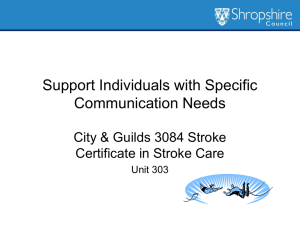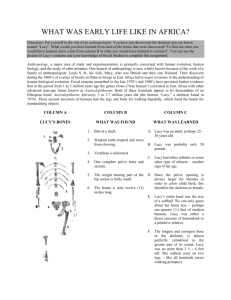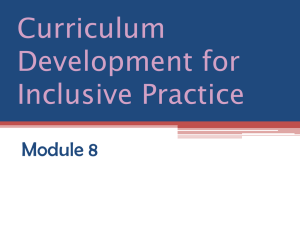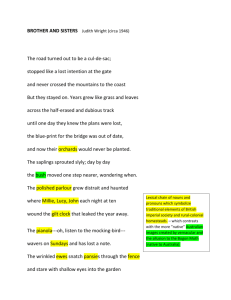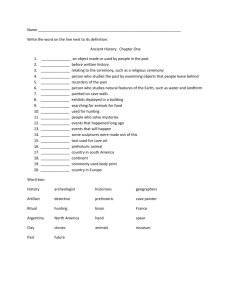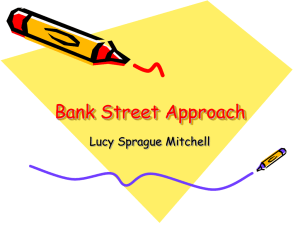Student Name:
advertisement
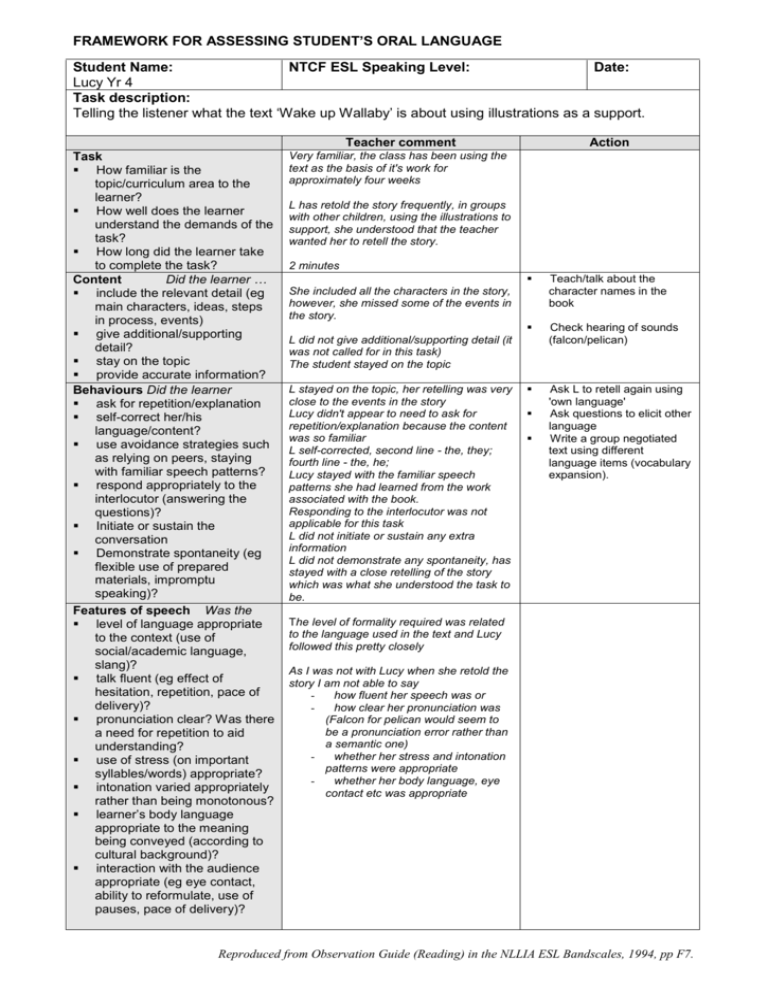
FRAMEWORK FOR ASSESSING STUDENT’S ORAL LANGUAGE Student Name: NTCF ESL Speaking Level: Date: Lucy Yr 4 Task description: Telling the listener what the text ‘Wake up Wallaby’ is about using illustrations as a support. Teacher comment Task How familiar is the topic/curriculum area to the learner? How well does the learner understand the demands of the task? How long did the learner take to complete the task? Content Did the learner … include the relevant detail (eg main characters, ideas, steps in process, events) give additional/supporting detail? stay on the topic provide accurate information? Behaviours Did the learner ask for repetition/explanation self-correct her/his language/content? use avoidance strategies such as relying on peers, staying with familiar speech patterns? respond appropriately to the interlocutor (answering the questions)? Initiate or sustain the conversation Demonstrate spontaneity (eg flexible use of prepared materials, impromptu speaking)? Features of speech Was the level of language appropriate to the context (use of social/academic language, slang)? talk fluent (eg effect of hesitation, repetition, pace of delivery)? pronunciation clear? Was there a need for repetition to aid understanding? use of stress (on important syllables/words) appropriate? intonation varied appropriately rather than being monotonous? learner’s body language appropriate to the meaning being conveyed (according to cultural background)? interaction with the audience appropriate (eg eye contact, ability to reformulate, use of pauses, pace of delivery)? Action Very familiar, the class has been using the text as the basis of it's work for approximately four weeks L has retold the story frequently, in groups with other children, using the illustrations to support, she understood that the teacher wanted her to retell the story. 2 minutes Teach/talk about the character names in the book Check hearing of sounds (falcon/pelican) Ask L to retell again using 'own language' Ask questions to elicit other language Write a group negotiated text using different language items (vocabulary expansion). She included all the characters in the story, however, she missed some of the events in the story. L did not give additional/supporting detail (it was not called for in this task) The student stayed on the topic L stayed on the topic, her retelling was very close to the events in the story Lucy didn't appear to need to ask for repetition/explanation because the content was so familiar L self-corrected, second line - the, they; fourth line - the, he; Lucy stayed with the familiar speech patterns she had learned from the work associated with the book. Responding to the interlocutor was not applicable for this task L did not initiate or sustain any extra information L did not demonstrate any spontaneity, has stayed with a close retelling of the story which was what she understood the task to be. The level of formality required was related to the language used in the text and Lucy followed this pretty closely As I was not with Lucy when she retold the story I am not able to say how fluent her speech was or how clear her pronunciation was (Falcon for pelican would seem to be a pronunciation error rather than a semantic one) whether her stress and intonation patterns were appropriate whether her body language, eye contact etc was appropriate Reproduced from Observation Guide (Reading) in the NLLIA ESL Bandscales, 1994, pp F7. FRAMEWORK FOR ASSESSING STUDENT’S ORAL LANGUAGE Teacher comment Textual features Did the talk have appropriate structure/sequencing according to text type? Did the learner use cohesion with effect omission/substitution (Will he come? I don’t think so) to add information (and, and then, also, in addition, furthermore ….) to contrast information (but, however, although…) to qualify, express possibility (if, unless, except) to express cause/effect (so, because, as a result) to express time (then, next, when …) to refer to ideas, people, things within the text (From the start the All Stars Band were very good musicians and because they had become popular in one place they travelled a lot. Grammar and vocabulary Did the learner use a variety of sentence structures – simple and complex? use modals effectively (can, could, must, should, would, possibly, probably …) use ‘context-embedded’language or language which gave the audience all the knowledge they needed? choose vocab and expressions appropriate to the audience? (formal/colloquial) use idiomatic speech? (No I can’t shout today, I’m a bit hard up.) use a range of expression? (ability to make meaning clear, to express ideas, choice/variety of words/expressions to maintain listener’s interest, Grammatical accuracy Did the learner use verbs appropriately (tense, active/passive)? have correct use of singular/plural forms, subject/verb agreement? use articles appropriately (a/an/the)? use prepositions appropriately use correct sentence structure and word order? Lucy retold the story in the correct sequence as given in the story. Lucy is using a singular cohesive device to add information 'and'. Her use of reference items is not clear ( the first 'they'); some are used correctly ( the kangaroo...him); others are omitted (bark and ---- didn't wake up) Lucy uses very simple sentence structures (subject-verb-object), (the sentence structures modelled in the book would were also simple) Action Teach alternatives to the use of 'and'. •Do sentence extension exercises (scrambled sentences joined by various conjunctions, with alternative pronouns, linking pronouns to nouns). •Teach alternative ways of saying the same thing Lucy did not use a variety of sentence structures, however, this could have been dictated by the task. Lucy did not use modals in her speech (can, should, could) Lucy's lack of facility with reference items means that her talk is context embedded and the meaning is not always clear. Lucy used only vocabulary /expressions that she had learned from the text. Lucy did not use idiomatic speech (could have been dictated by the task) Similarly L did not use a range of expressions in her speech Lucy mixes some present and past tense verbs subject- verb agreement is inconsistent (They was) L has not used articles much (a/an), she uses (the) sometimes inappropriately and maybe as a pausing device. L has not used nay prepositions in this text. L word order was generally correct, although there was some repetition of pronouns. Lucy mixes some present and past tense verbs subject- verb agreement is inconsistent (They was) L has not used articles much (a/an), she uses (the) sometimes inappropriately and maybe as a pausing device. L has not used any prepositions in this text. L word order was generally correct, although there was some repetition of pronouns Teach aspects of grammar in context - in shared book, group negotiated text etc Other suggestions for action: Reproduced from Observation Guide (Reading) in the NLLIA ESL Bandscales, 1994, pp F7.
